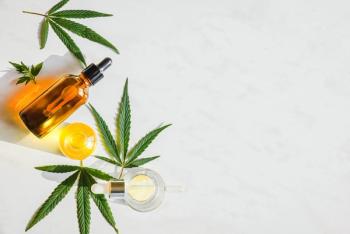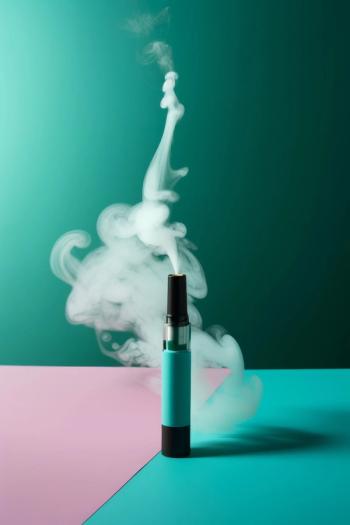
Cannabis Science and Technology
- September 2020
- Volume 3
- Issue 7
Budtender: Is That a Harmful Mold in My Bud?
An argument for moving away from traditional culture-based methods and towards employing methods with increased specificity and accuracy.
As the novel COVID-19 pandemic spreads through our country, it is a somber
reminder that our public health regulations and methods of analysis should be constantly evaluated. As we learn more about diseases on a genetic level, we become more reliant on DNA based technologies. As we advance our understanding of
DNA based technologies, application toward public safety regulations should be a natural conclusion. This article presents an argument for moving away from traditional culture-based methods and towards employing methods with
increased specificity and accuracy.
In the uncertain times brought about by COVID-19 and the cannabis industry being designated as an essential business, it creates an opportunity to evaluate how the microbial rules are determined in the cannabis industry and how testing laboratories across the country analyze these samples. There is no doubt that cannabis testing laboratories and regulators across this country work together to create a program that ensures all people are consuming a quality and, most importantly, a safe product. It is also important to regularly ask whether the testing rules are stringent enough and in line with the knowledge and technologies that are available today. Is there a good reason for medical and adult-use products to have different action limits? Are our testing methods specific enough? Are we employing methods that mitigate subjectivity in analysis?
Current Regulations
Action limits are defined thresholds that determine whether a product is safe for consumption. What thresholds are in place now and how were they determined? Some action limits are qualitative, which is essentially an absence or presence of analysis for Shiga-Toxin producing Escherichia Coli (STEC), Salmonella spp., and Aspergillus (flavus, niger, terreus, and fumigatus), these are determined on a state by state basis by state regulators. Many of the existing action limits come from the recommended standards set forth by the American Herbal Pharmacopoeia in its 2014 publication, Cannabis Inflorescence: Standards of Identity, Analysis, and Quality Control (1). This seminal publication has put forth recommended quantitative tolerance limits at levels that have been determined acceptable and safe for human consumption.
Quantitative action limits for microbial load can appear to be subjective at first glance. The quantitative recommended limits were put forth in 2014, after the authors had collected and compiled data and resources in the years prior. How much of these determinations were based on the existing technologies of the time? How much of the determinations were due to the legality surrounding cannabis testing at the time? What rationale is there for different action limits for medical cannabis and adult-use cannabis?
When we compare the technologies of the time to today, we are comparing culture-based plating testing to quantitative polymerase chain reaction (qPCR). Both methods identify colonies but in very different ways; culture-based plates inclusively count all yeast and mold species that grow colony forming units on an agar plate and qPCR exclusively identifies DNA of specific yeasts and mold species.
As the accepted legality of cannabis increases, so does the cultivation and testing of cannabis. This has presented us with greater resources and opportunities to pool all of our collective data and experiences. An example of such new knowledge are biological controls. Cultivators, many of whom strive to create clean and organic cannabis products, aim to move away from harmful pesticides and fungicides, and are turning to biocontrols to help ensure the naturalness of the product intended for medical patients. We know that these biocontrols include certain types of fungi that are harmless to humans, but they are also included in the quantitative count on culture-based plates. It becomes important that we have testing methods that do not unnecessarily punish cultivators for trying to create their vision of a quality product.
Advanced Technologies
Understanding the technologies available to us can help us understand where we are and where we can go from here. Culture-based plating is the traditional method for enumerating total yeast and mold. With this method, samples are “plated” on nutrient-rich media that will support the growth of general yeast and mold fungi and incubated for a predetermined amount of time. After which, yeast/mold colony forming units (CFUs) are tallied and the cumulative result is the total fungal bioburden present in the sample. Knowing the quantified bioburden present in the sample is an excellent indicator test, however, it misses the mark when it comes to distinguishing between those that are benign and those that are pathogenic to humans. Aspergillus, a ubiquitous mold that has several species—for example, A. flavus, A. fumigatus, A. niger, and A. terreus—that are known to be harmful to humans and cannot be visually identified by commercial culture-based plating methods. There are noncommercial plate-culture methods, but they require a trained mycologist to visually identify the species in the presence of other yeasts and molds.
PCR is a molecular detection technology that is rapidly becoming a tool in every microbiology laboratory. The principle of a PCR assay, simplified, has four steps:
- All DNA is extracted from the sample;
- Three DNA oligomers—two “primers” that contain very specific DNA sequences and one fluorophore marker “probe”—are added to the solution containing all DNA from the sample;
- The mixed solution, in a thermocycler, undergoes iterative cycles of heating, where the primers will bind to unique DNA sequences of the target organism, if present in the solution, and create a copy of the DNA sequence;
- The probe is bound to this DNA copy at the end of each cycle and then emits light that is captured and measured by a camera.
The amount of DNA copies and light emitted is amplified with each cycle. By measuring the amount of light emitted, it is possible to reverse calculate the initial concentration of the target organism—a PCR assay known as qPCR.
PCR assays have several key advantages compared to culture-based plating methods. PCR assays have high specificity and species level resolution by identifying specific DNA sequences that are unique to the target organism or species. Most PCR assay kits come with 96-well plates, making it a high throughput assay. The exponential amplification of the PCR assay confers greater sensitivity that enables detection of very low amounts of target DNA, which may be out competed by nontarget microorganisms on culture-based plates. Speed is another advantage; most PCR assays only require an overnight incubation in an enrichment broth and the PCR analysis can be conducted the next day.
Despite the evident advantages, the widespread implementation of PCR is limited by two valid arguments: cost and the DNA of dead cells. All PCR equipment, kits, and reagents necessary for PCR assays can incur greater upfront cost relative to the culture-based plating method. High throughput efficiencies can help offset some of the costs. Secondly, the sensitivity of PCR assays allows for the detection of DNA from dead and nonviable cells. The purpose of cannabis microbial screening is to screen for the living microorganisms that may have a negative effect on human health and dead or nonviable cells do not pose the same threat to human health. However, more PCR assays are now incorporating a pretreatment step to deactivate or neutralize the DNA from dead or nonviable cells, eliminating the possibility of a false positive.
There might be some unintended consequences by relying on culture-based plating testing with its limitations. Some regulators are considering or have allowed increased total yeast and mold action limits for cannabis intended for adult-use. Two questions immediately come to the forefront: Are adult-use cannabis products inherently less safe or less clean than medical products now that they have higher action limits? Are medical cultivators now turning to potentially harmful chemical-based pesticide and fungicides to eliminate microbial contamination in their products? In light of public safety, and especially with the stay at home orders placed, perhaps the question we should be asking regulators is why is it okay for the state to say “here you go pal, this product would not be acceptable for medical consumers but since you are consuming this for fun, you can handle a wee bit of a cough”?
There is no real reason to allow different action limits for cannabis based on the distinction between medical use versus adult-use. Some of the latest qPCR assays for cannabis testing have the capability to quantify total yeast and molds counts, a potential replacement for the traditional culture-based plating method. Even with the additional complexity that comes with quantitation of many different yeasts and mold, a successful qPCR method can be more accurate, reliable, and truer to the spirit of the regulations than plating methods.
Conclusion
The cannabis industry has changed significantly from prelegalization to today. Long gone are the days of cannabis being grown, cured, and stored in poor, unregulated environmental conditions. In today’s regulated cannabis industry, the occurrence of pathogenic microbial contaminants is very rare. The cannabis industry is in its infancy and is still evolving. We, as stewards of public health, should constantly strive to evaluate the changing regulations and new advances in testing technologies. Testing laboratories serve to minimize hazardous risk to the public, particularly the immune-compromised population. The recent vaping crisis and the COVID-19 pandemic are all too much a reminder that the field of public health and safety must be a constantly evolving one.
Reference
About the Author
RYAN KOBYLARZ, PhD, is the Quality Assurance Director for North Coast Testing Laboratories of Michigan, LLC in Adrian, Michigan. Direct correspondence to:
How to Cite this Article
R. Kobylarz, Cannabis Science and Technology 3(7), 34-36 (2020).
Articles in this issue
over 5 years ago
The Pet Lab Syndromeover 5 years ago
To Grind or Not To Grindover 5 years ago
The Hidden Costs of Falling FilmsNewsletter
Unlock the latest breakthroughs in cannabis science—subscribe now to get expert insights, research, and industry updates delivered to your inbox.




